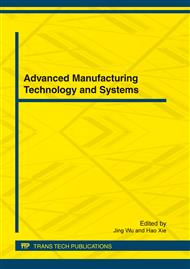p.361
p.366
p.371
p.376
p.380
p.385
p.390
p.395
p.400
Usability Evaluation of Welding Clamp Based on Improved Fuzzy Synthetic Evaluation Model
Abstract:
Usability is the basic properties of the product, and it is the overall evaluation to the product usability. In this paper, firstly, establish a usability evaluation index system of the welding clamp. Then, use the improved fuzzy synthetic evaluation method to assess the usability of welding clamp. In an improved fuzzy synthetic evaluation model, the index weight which is identified by using AHP method is amended objectively by using entropy technology, the resolution ratio is improved by classifying the differences between qualitative indexes and quantitative indexes. Finally, get the evaluation results of the usability of a welding clamp according to the method above.
Info:
Periodical:
Pages:
400-404
Citation:
Online since:
March 2012
Authors:
Price:
Сopyright:
© 2012 Trans Tech Publications Ltd. All Rights Reserved
Share:
Citation:


